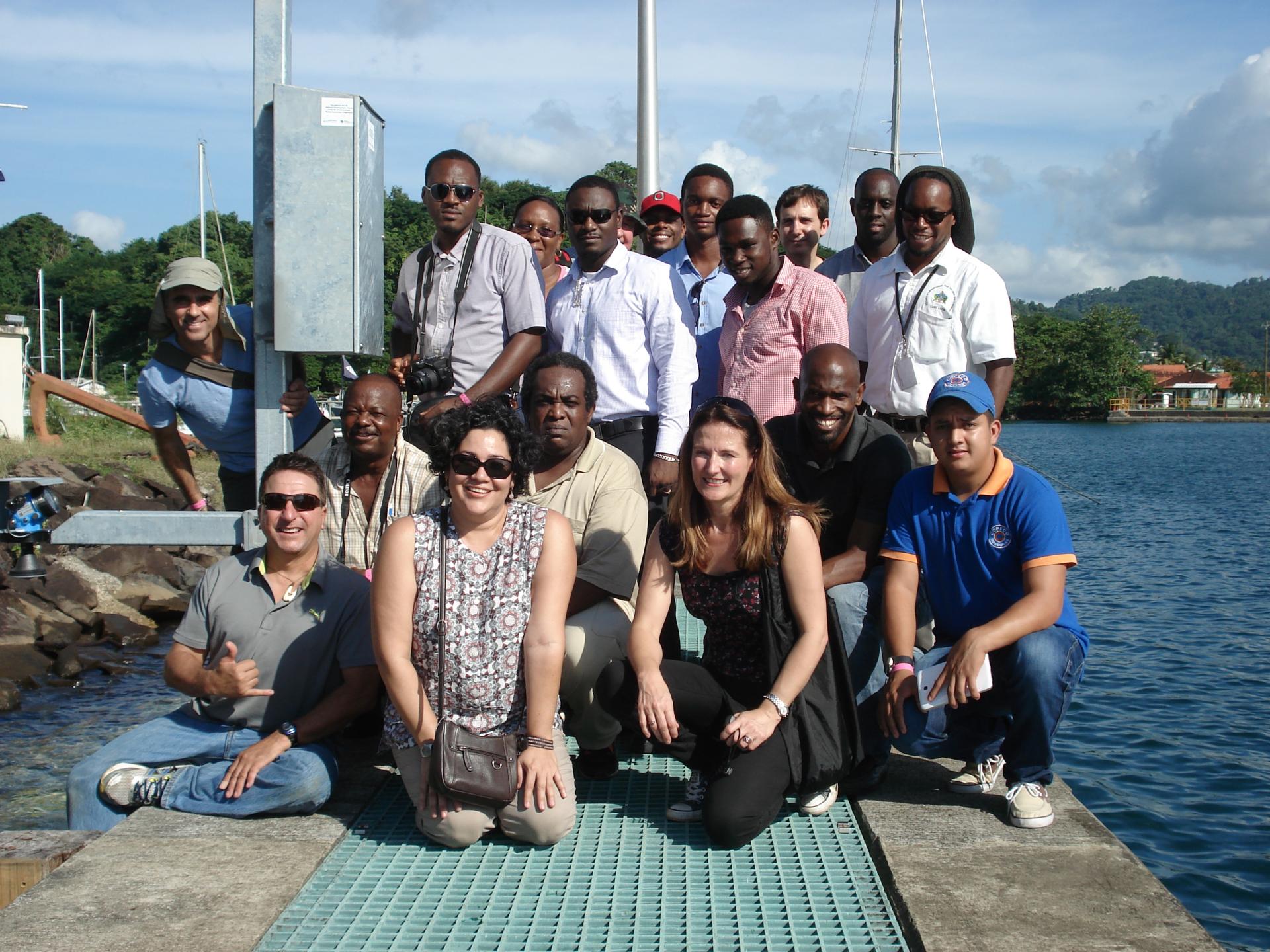
World Tsunami Awareness Day is observed annually across the globe on 5 November, calling for countries, international bodies and civil society to raise tsunami awareness and share innovative approaches to risk reduction.
For this month’s scientist spotlight, we caught up with Senior Sea Level and Tidal Scientist Dr Angela Hibbert to learn about her fascinating role at NOC, and as the UK’s Tsunami National Contact.
What is your role in research at NOC?
I am a Senior Sea Level and Tidal Scientist leading NOC’s renowned Sea Level and Ocean Climate subgroup of 14 scientists and engineers. I am an expert in sea level monitoring using tide gauges and I manage tide gauge networks in the UK and the South Atlantic and Southern Oceans. I also support the installation of tide gauges in developing economies and have delivered technology and training solutions in the UK, Africa and the Caribbean.
My aim is to improve resilience globally to coastal hazards such as tides, storms surges, tsunamis and long-term sea level rise. As part of this, I am the UK’s Tsunami National Contact, representing UK interests to the Intergovernmental Oceanographic Commission’s (IOC) early warning networks in the northeast Atlantic, Mediterranean and Caribbean region (NEAMTWS and ICG/Caribe-EWS, respectively).
Why is it so important that World Tsunami Awareness Day is recognised?
It is estimated that over 260,000 people globally have died due to tsunamis during the past 100 years and with increasing populations and rising sea levels, these death tolls could increase. It is really important to use events like World Tsunami Awareness Day to ensure that people are aware of the risks and the steps that they take to protect themselves.
What drew you to working in this area?
I was introduced to sea level science as part of my undergraduate degree at the University of Liverpool and I found it fascinating, so when I saw a vacancy for a PhD studentship studying sea level in polar regions, I immediately applied. As I was reaching the end of my PhD studentship, I spotted a vacancy at the NOC for a Tidal Scientist and was offered the job. It meant that I had to combine working at the NOC with writing up my thesis for a while, which was quite demanding but I couldn’t let the opportunity pass me by.

What science are you currently working on?
I am currently examining how sea levels and tides have changed off the coast of Belize since the 1970s and I am also working on improving the predictability of tides around the UK coast. Tidal characteristics and tidal ranges vary significantly in UK waters and can be very tricky to predict accurately in some cases.
What is your favourite thing about the work you do?
I really enjoy educating people about sea level changes. I get opportunities to talk to people in all walks of life, from school children, students, young industry professionals, to people working in flood forecasting, coastal planning and even government ministers.
What impact does your science have on society?
I work to ensure that society is protected from coastal flooding by providing timely information to support early warning systems as well as longer-term assessments about the risks associated with climate change.